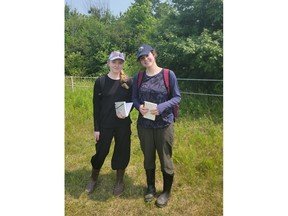Executive Summary
The CRISPR-Cas9 patent landscape remains complex and unsettled. The Federal Circuit’s latest decision in University of California v. Broad Institute1 revived the high-stakes dispute between UC2 and Broad3 over foundational patent rights for CRISPR-Cas9 editing in eukaryotic cells, continuing uncertainty in the field over ownership. While the court agreed that UC’s earliest provisional application lacked proper written description, in a significant move, it vacated the Patent Trial and Appeal Board’s (PTAB) decision that Broad had priority and remanded the case to the PTAB to reevaluate who was the first to invent. This decision also impacts and will further delay parallel interferences involving ToolGen and Sigma-Aldrich. Outside the U.S., there is new litigation and ongoing legal proceedings with varying jurisdictional outcomes. Companies developing CRISPR-Cas9 based technologies should closely monitor these developments, as the evolving global landscape can have a significant impact on freedom-to-operate and licensing considerations for IP assets.
Background
UC and Broad have been involved in two interferences at the patent office. Interference No. 106,115 was the second interference between UC and Broad over patent rights to CRISPR-Cas9 technology in eukaryotic cells. The first interference concluded in 2018 after an appeal to the Federal Circuit, with the holding that the parties’ claims did not interfere because Broad’s claims to CRISPR-Cas9 in eukaryotes were not obvious over UC’s CRISPR claims that were not restricted to an environment or organism.
Following the first interference, UC filed new patent applications directed specifically to CRISPR-Cas9 editing in eukaryotic cells, triggering the PTAB to declare the second interference in June 2019. The second interference involved 14 patent applications of UC, and 13 patents and one patent application of Broad, all of which have claims covering CRISPR-Cas9 technology in eukaryotic cells. The PTAB’s analysis mainly focused on determining which party’s inventors were the first to invent CRISPR-Cas9 editing in eukaryotic cells. UC asserted that its inventors conceived the invention on March 9, 2012, and had reduced it to practice by August 9, 2012. In support of its reduction-to-practice date, UC presented evidence indicating a successful result of eukaryotic gene editing. The PTAB was not convinced and concluded that UC’s evidence did not support that date. In February 2022, the PTAB awarded priority to Broad, finding that Broad’s inventors had presented sufficient evidence of an actual reduction to practice by October 5, 2012. UC appealed the PTAB’s 2022 decision to the Federal Circuit.
Federal Circuit’s May 2025 Decision
On May 12, 2025, the Federal Circuit issued a precedential decision in University of California v. Broad Institute on whether the PTAB correctly held that Broad has priority over UC for CRISPR gene editing in eukaryotic cells in Interference No. 106,115.
1. Remand for conception: Conception standard misapplied by PTAB
The Federal Circuit vacated the PTAB’s decision on conception and remanded for the PTAB to decide on conception under the proper application of the legal framework. The Federal Circuit held that the PTAB committed legal error in analyzing the record by failing to consider routine methods or skill, focusing almost entirely on UC scientists’ perceived experimental difficulties and related statements of doubt.
2. Affirmed lack of written description in UC’s earliest provisional application
The Federal Circuit affirmed the PTAB’s decision that UC’s 2012 first provisional application lacked written description because UC failed to disclose enough to show possession of CRISPR-Cas9 editing in eukaryotic cells. In reaching this decision, the Federal Circuit disagreed with UC that the PTAB applied the wrong legal standard for written description.
3. Dismissed Broad’s cross-appeal challenging the PTAB’s interpretation of “guide RNA”
The Federal Circuit deemed moot and dismissed Broad’s cross appeal challenging the PTAB’s construction of the term “guide RNA” as being limited to single-molecule format.
Next Steps, Impact, and Strategic Considerations
Further PTAB Proceedings on Remand
The Federal Circuit decision continues the longstanding dispute over foundational CRISPR-Cas9 patents in the U.S. The PTAB must reassess priority of invention under proper standards for conception and constructive reduction to practice, rather than treating UC’s perceived experimental difficulties and related statements of doubt as dispositive. In practice, the PTAB does not need to reopen the record for additional evidence, but rather just reanalyze the existing record. It remains to be seen whether the outcome will differ from that reached by the PTAB in its 2022 decision.
Once the mandate issues, the PTAB will regain jurisdiction over the interference. The PTAB may, but need not, authorize additional briefing. No deadline exists for the PTAB’s decision on remand. An appeal from that decision cannot be ruled out.
Potential Request for Rehearing or Petition for Certiorari to the U.S. Supreme Court
The Federal Circuit decision appears oddly in tension with itself and the Federal Circuit’s decision in the first interference with respect to conception vs. written description analysis. While it is technically possible to conceive but not disclose, this holding has implications on UC’s conception issue. If UC’s 2012 provisional application did not possess the invention (written description), it raises the question whether UC possessed the invention (conception) and, if so, why this was not fully disclosed.
Either party could request a rehearing at the Federal Circuit or even seek certiorari at the U.S. Supreme Court. Certiorari is uncommon in interference proceedings. Even without rehearing, the mandate will not issue until late June 2025; with a rehearing request, the mandate could be delayed for months.
Implications for Related Interferences: ToolGen and Sigma-Aldrich
ToolGen and Sigma-Aldrich have been involved in parallel interferences with Broad and UC involving CRISPR-Cas9 in eukaryotic cells. These proceedings share overlapping legal issues with respect to priority of invention. The PTAB suspended these related interferences in September 2022 until the Federal Circuit issued a decision in the appeal between UC and Broad. The Federal Circuit’s May 2025 decision will likely further delay decisions in these related interferences. The PTAB will not restart these interferences until it regains jurisdiction over the UC-Broad interference and, even then, might choose to maintain the stays until it has finally resolved this interference.
Patent Term
Applications receive day-for-day term restoration for time spent in an interference. Given the long delays in resolving these interferences, successful applicants might receive years of added patent term. This would be especially true if one of the stayed interferences produces the ultimate winner of this contest.
CRISPR-Cas9 Landscape in Europe
While the CRISPR-Cas9 landscape situation in the U.S. has yet to be resolved, the situation in Europe has previously been more favorable for UC while Broad faced challenges due to formal priority defects. However, recent shifts in European patent law that relaxed the European Patent Office’s approach to “same applicant” priority could strengthen Broad’s position in Europe.
ToolGen’s Patent Infringement Lawsuit Against Vertex
On April 21, 2025, ToolGen filed a patent infringement lawsuit in the UK against Vertex Pharmaceuticals and its manufacturing partners. The lawsuit alleges that Vertex’s genome editing therapy, Casgevy, which treats sickle cell disease and beta-thalassemia and is the first approved CRISPR/Cas9 genome editing therapy to receive marketing authorization, infringes ToolGen’s European patent EP4357457 (’457 patent) without a license. Vertex has contested the validity of ToolGen’s ’457 European patent, filing oppositions with the European Patent Office. The outcome of this dispute could have significant implications for the commercialization of CRISPR-Cas9 based therapies in Europe.
Conclusion
The CRISPR-Cas9 patent landscape remains highly complex and unclear. Ongoing interference proceedings, new litigation, and varying outcomes across jurisdictions continue to create uncertainty in the field. Companies working on CRISPR-Cas9 based technologies should closely monitor these developments, as the evolving landscape and future decisions may significantly impact freedom-to-operate and licensing considerations for IP assets.
[1] Appeal No. 22-1653 (Fed. Cir.).
[2] The Regents of the University of California, University of Vienna, and Emmanuelle Charpentier (collectively, “UC”).
[3] The Broad Institute, Massachusetts Institute of Technology, and Presidents and Fellows of Harvard College (collectively, “Broad”).







